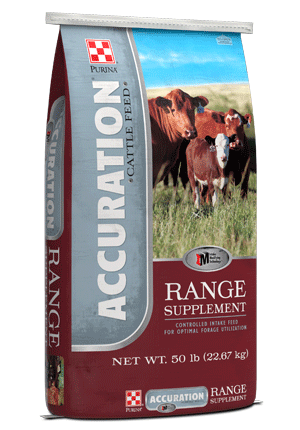
Forage Ahead During Fall Grazing
Management : Cow & Calf

Grazing in the fall extends your grazing season and helps reduce the costs of feeding stored forages and overall cow maintenance costs. However, forage quality can vary depending on region, grazing management and type of forage. During the cooler season, pastures transition from high-quality grasses with active growth to more mature, dormant grasses with decreasing energy and protein quality. This change in quality, while a challenge, doesn’t necessarily outweigh the benefits of fall grazing.
Optimizing fall grazing management can potentially reduce costs, help ensure your cows get the nutrients they need and aid in the protection of your pastures.
Crop residue and stockpiled forage are more mature forages that may need supplemental nutrition to improve digestibility and protein supplementation. Cover crops can be very high-quality forage, but depending on type and maturity, they may require some dry forage supplementation to help maintain gut health.
A great option when forage quality is changing in a grazing situation is Purina® Accuration® products. Depending on region and forage type, liquid, block or self-fed options are available. Another alternative is utilizing Purina® RangeLand® protein tubs as a lower-intake supplementation option that can support smaller gaps in nutrition.
Mineral supplementation can be critical during grazing to help balance the diet and feed the rumen microbes.
Ensure you leave enough residue in your pastures to avoid winter kill and other pasture issues. Overgrazing impacts the energy the plants need to survive the cold season and how they start initial spring growth as the weather warms.
The fall offers an excellent opportunity to protect your pastures and tackle potential issues. Some pastures may require overseeding or no-tilling to give them an easier start come spring, and others may need weed management to tackle those tough-to-kill weeds.
Testing your soil and applying fertilizers in the fall to bridge any gaps in soil nutrients may help strengthen your pastures and spring forage growth.
Reach out to a Purina nutritionist to start designing a nutrition plan that helps maximize your fall forage resources.
Does your cattle nutrition program stack up? Find out with a Proof Pays trial.
Optimizing fall grazing management can potentially reduce costs, help ensure your cows get the nutrients they need and aid in the protection of your pastures.
Extend your season
Stockpiling forages, grazing crop residue or cover crops can help extend the grazing season and potentially reduce input costs. Depending on your fall grazing strategy, understanding the gaps in nutrition is essential to providing the nutrition cattle need to optimize their performance.Crop residue and stockpiled forage are more mature forages that may need supplemental nutrition to improve digestibility and protein supplementation. Cover crops can be very high-quality forage, but depending on type and maturity, they may require some dry forage supplementation to help maintain gut health.
Fill the gap
Since forage quality can change throughout the fall, testing the standing forage may not be practical. Based on the type of forage and cowherd’s production stage, we recommend working with a nutritionist to identify potential gaps, such as protein or energy, and what supplementation may be needed.A great option when forage quality is changing in a grazing situation is Purina® Accuration® products. Depending on region and forage type, liquid, block or self-fed options are available. Another alternative is utilizing Purina® RangeLand® protein tubs as a lower-intake supplementation option that can support smaller gaps in nutrition.
Mineral supplementation can be critical during grazing to help balance the diet and feed the rumen microbes.
Prepare for future seasons
Your pasture management during the fall may impact the following spring grazing season, making it critical to invest time in it. This management can include avoiding overgrazing, planting seeds to fill gaps and applying fertilizers and weed control as needed.Ensure you leave enough residue in your pastures to avoid winter kill and other pasture issues. Overgrazing impacts the energy the plants need to survive the cold season and how they start initial spring growth as the weather warms.
The fall offers an excellent opportunity to protect your pastures and tackle potential issues. Some pastures may require overseeding or no-tilling to give them an easier start come spring, and others may need weed management to tackle those tough-to-kill weeds.
Testing your soil and applying fertilizers in the fall to bridge any gaps in soil nutrients may help strengthen your pastures and spring forage growth.
Build a plan with the right partner
Find a nutritionist and local salesperson to work with to assist in preparing diets for fall and throughout winter. Proper planning helps ensure you feed the right forages and supplements at the optimal times to meet your cattle’s needs.Reach out to a Purina nutritionist to start designing a nutrition plan that helps maximize your fall forage resources.
Does your cattle nutrition program stack up? Find out with a Proof Pays trial.



